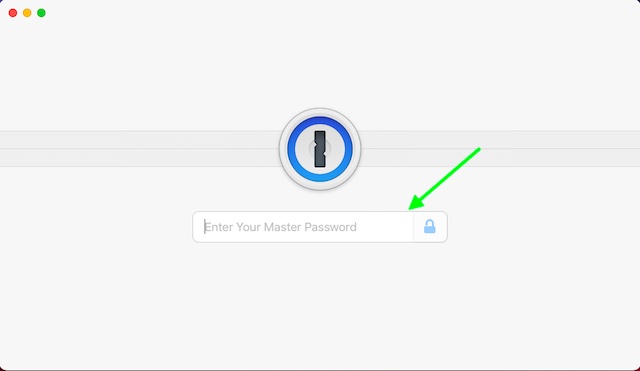- While Apple’s Keychain, 1Password, and LastPass can all store other sorts of data securely, passwords are the most reliable element that can used across a whole ecosystem and across platforms.
- Now you can quit 1Password, quit Safari, and you’re good to go. When you need a password, click on the “1Password Logins” bookmarklet and a window pops up: Enter your access code, click on the correct match and poof, you’re logged in and you’re working within Chrome / Chromium and have access to all your 1Password data.
- Microsoft’s mobile Authenticator app now works as a password manager. It can autofill passwords on iOS or Android, and passwords will even sync to Google Chrome.
Discover great apps, games, extensions and themes for Google Chrome. If you’ve saved more than one username and password: Select the username field and choose the sign-in info you want to use. To let Chrome sign in with your saved username and password, use your.
The feature is part of the browser’s security improvements that were first built into its desktop version
Google is bringing new security features on the Android and iOS versions of its Chrome web browser. Chrome 86, which was released earlier this week, adds features that are aimed at bolstering password protection and as well as adding a more safe and secure browsing experience.
Much like with a feature that is already available for Chrome on computers, the browser’s version for mobile platforms will now compare your saved login credentials against a list of login details that are known to have been compromised; if a match is found, it will alert you. For convenience’s sake, the browser will also redirect you straight to the form where you can change your credentials.
RELATED READING: The worst passwords of 2019: Did yours make the list?


Additionally, Google is also introducing its Safety Check feature to the Chrome mobile release after first launching it on desktop. This will include checking whether your browser version is up to date and if you’ve enabled Safe Browsing.

Another feature that is making its way to Android and that, too, was launched on Chrome desktop earlier this year is Enhanced Safe Browsing. The feature adds proactive protections that are aimed at shielding you from phishing, malware, as well as fraudulent and dangerous websites, by providing real-time data to Google’s Safe Browsing service. Google estimates that users who have activated the feature have seen a 20-percent drop in entering their credentials into phishing websites.
To boost password security on iOS, Google is adding biometric authentication before auto-filling passwords on its browser. You will now be able to authenticate yourself using your device’s existing biometric login features – Face ID and Touch ID – as well as passcode. Moreover, the Chrome Password Manager will allow you to autofill saved passwords on other iOS apps as well, as long as you enable the feature in Chrome’s settings.
Google was also planning to launch mixed form warnings that were slated for Chrome 86 but are now being delayed until Chrome 87 which will be released on November 17th. The feature is planned to be a part of both the desktop and Android versions of the browser and is supposed to warn you before you submit a non-secure form that is embedded on an HTTPS secured webpage. It will also block and alert you to some insecure downloads launched by secure websites. Chrome plans to eventually block mixed downloads altogether, which means secure websites will be limited to launching only secure downloads regardless of the file type.
Discussion

Set up Touch ID
Before you can set up Touch ID in 1Password, you’ll need to set up Touch ID for your device. Then follow these steps:
- Open and unlock 1Password.
- Tap Settings > Security.
- Turn on Touch ID.
Now you can use your fingerprint to unlock 1Password. But don’t forget your Master Password. Sometimes you’ll need to enter it instead of using Touch ID.
Use Touch ID
After setting up Touch ID, open 1Password. If 1Password is locked, you can use Touch ID instead of your Master Password. To unlock 1Password, place your finger on the Touch ID sensor.
Sometimes you won’t see the prompt:
- If you’ve canceled the Touch ID prompt
- If you’ve restarted your device
Depending on your settings, you might see the Touch ID button below the Master Password field. Tap it and the prompt will appear.
Manage your settings
To change how often your Master Password is required instead of your fingerprint, go to Settings > Advanced > Security.
1password Extension For Chrome
- Require Master Password: If you want 1Password to require your Master Password instead of Touch ID after restarting your device or after a specific amount of time, change this setting. By default, 1Password will not ask for your Master Password in those cases.
1password X Chrome Touch Id
Learn more about automatically locking 1Password.
Get help
Sometimes you’ll need to enter your Master Password instead of using Touch ID:
- If your fingerprint isn’t recognized three times in a row
- If you tapped Settings > Security > Lock Now
- If you’re trying to change your Master Password
- If you add or delete a fingerprint from your device
- If Require Master Password is set to After Device Restart in Settings > Advanced > Security, and you’ve just restarted your device
- If the amount of time in Settings > Advanced > Security > Require Master Password has elapsed
If you still need help, follow these steps. Try again after each step:
1password Google Chrome
- Make sure you have the latest version of 1Password.
- Make sure that you are able to use Touch ID to unlock your device.
- Turn off Touch ID in 1Password > Settings > Security, then turn it back on again.
- Try enrolling a different finger.
Learn more
